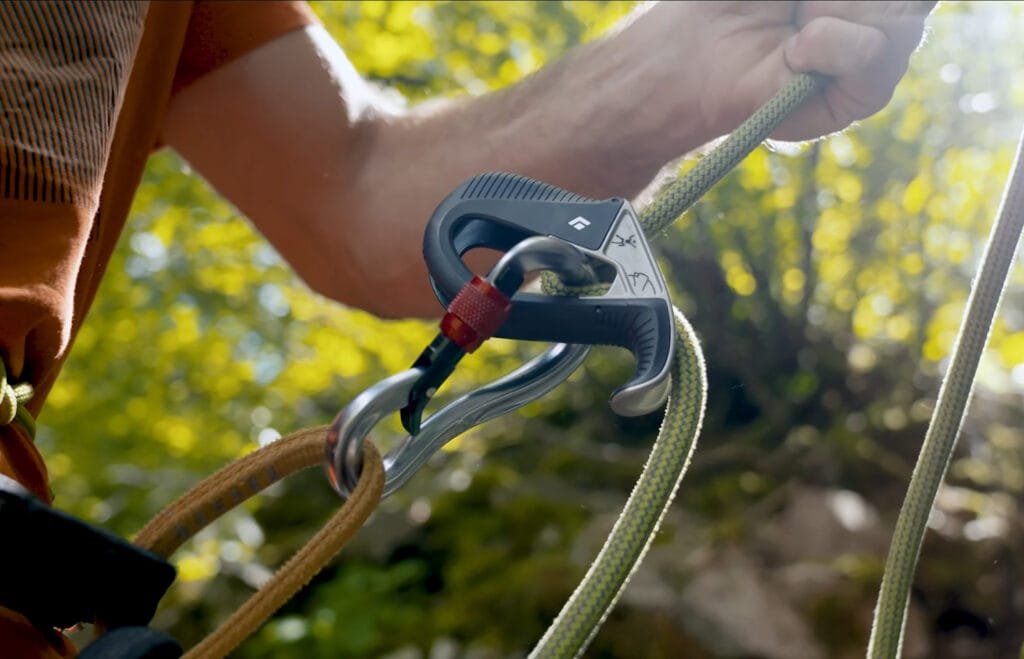Belay Devices: How to Pick the Right One (2024 Guide)

Published on: 12/20/2022
In the days of yore, climbers wrapped their hemp rope around their hips and shoulders and held on tight to give a belay. At the time, hip belaying was the accepted technique for lead belaying. As you can imagine, climbers preferred not to fall instead of testing the limits of this rudimentary belay system.
Nowadays, climbers and belayers benefit from modern belay devices and updated belay techniques to help keep climbers safe, whether on lead or top roping. The challenge now is not typically one of safety. Instead, it’s figuring out which belay device is best amongst the myriad of belay devices on the market.
Keep reading to learn about belay devices and how to pick the right one based on your climbing experience and the style of climbing you enjoy.
What’s a Belay Device?

A belay device is climbing equipment that gives a belay to a climber. The climbing rope is threaded into the belay device and secured to the belay loop of the belayer’s harness with a carabiner.
A belay device functions like a brake on the climbing rope. The belay device, in combination with the belayer’s brake hand, creates friction on the rope, which allows the belayer to keep the tension and remain in control of the rope.
In the event of a fall, the belayer’s brake hand acting with the belay device creates enough stopping power to safely arrest the fall and catch the climber on the other side of the rope.
A Brief History of Belay Devices
Over the years, there have been very many iterations of belay devices. In one way or another, climbing gear manufacturers worldwide have contributed to the newest version of the most popular devices we belay with today.
The earliest known belay device was the Sticht Plate, invented by Frtiz Sticht and Hermann Huber in the 1960s.
After the Sticht Plate, the next best thing came in the 1990s. Black Diamond’s original Air Traffic Controller, or ATC, took the belay scene by storm. Modern iterations of the ATC are not far off the original design.
Since then, belay devices have continued to evolve. Plate and tubular belay devices still have a place in modern climbing kits. However, more modern devices with assisted braking are preferred by some climbers.
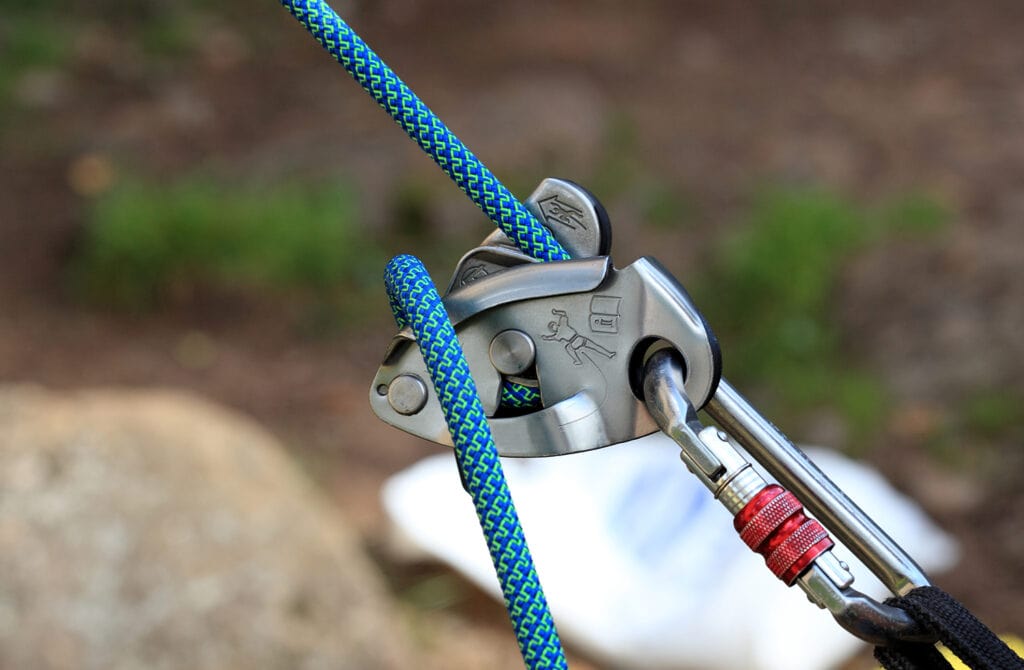
The Petzl Grigri, invented in 1991, is single-handedly the most well-known assisted braking belay device. Petzl’s most recent rendition of the Grigri has an anti-panic feature to add security when belaying in top rope mode.
Since the 90s, climbing belay devices have continually developed, particularly in the assisted braking device category. Most notable of these newer devices are tube-style devices with assisted braking, like the Mammut Smart from 2009 and, more recently, the Black Diamond Pilot.
Top Roping and Lead Belaying
Belay devices are used in top rope and lead climbing. For top-roping, a belayer takes slack out of the system through the device to keep the rope taut. In the event of a fall, the climber typically only falls the length of the rope’s dynamic stretch. The friction from the device and the top rope anchor stops the climber from going much further.

For lead climbing, a belayer puts slack into the system through the device. As the lead climber advances upwards, they use the slack to clip their rope into pieces of protection. In the event of a fall, the climber falls a much larger distance. If a lead climber is above their last piece of protection when they fall, they will fall double the distance.
When it’s time to come down, the belayer lowers the climber by releasing the friction created by their belay device by adjusting the placement of their brake hand or by defeating the assisted-braking mechanism of the device pinching the rope.
Belay devices are used in both single-pitch and multi-pitch styles of climbing. However, the type of device may vary based on the climbers’ experience and risk management considerations. Rope diameters and whether the climbers use single or double ropes will also impact their decision.
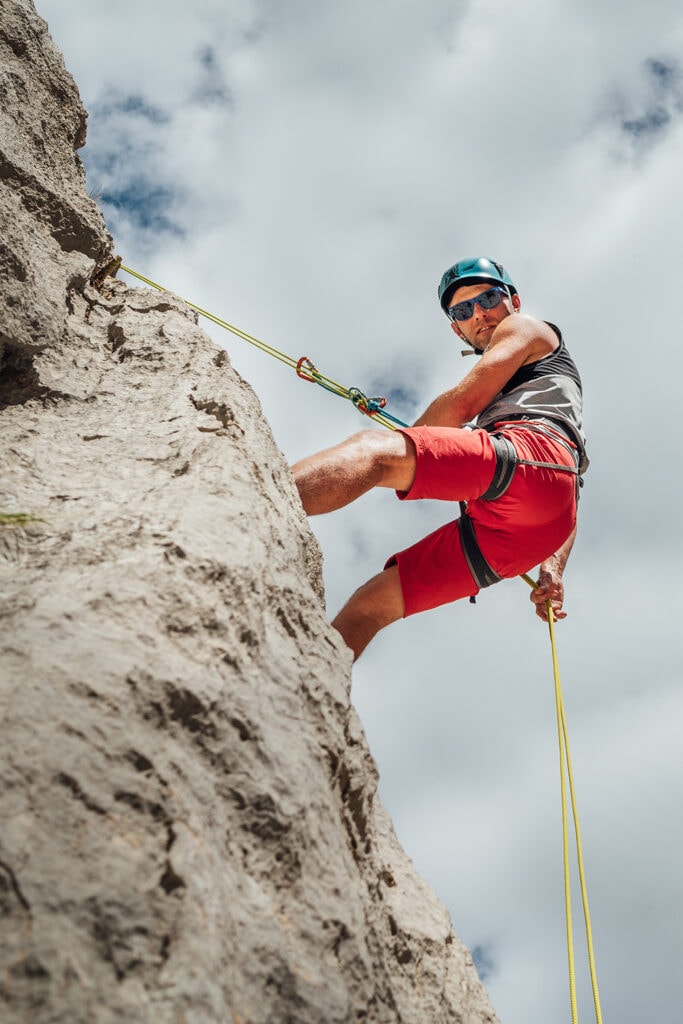
One non-negotiable for multi-pitch belaying is that the device needs to be able to belay in “guide mode.” Guide mode is a phrase that describes belaying from the top of the pitch.
Belaying in guide mode positions the device vertically and allows the belayer to belay off the anchor, not their harness. In doing so, the device has an auto-block feature that increases stopping power and safety.
Rappelling with a Belay Device
Most belay devices can also be used for rappelling. The type of rappel, i.e., the length and number of ropes, will dictate the type of device that is best for the task.
Most tubular-style devices can also be used for rappelling with two strands of rope. This makes tube devices extremely versatile on multi-pitch routes where rappelling is necessary to get down.
On the other hand, assisted-braking devices only allow for rappelling with a single strand of rope. This technique is common with descending fixed ropes to access the cliff, top rope soloing, and advanced rappel techniques like simul-rappelling.
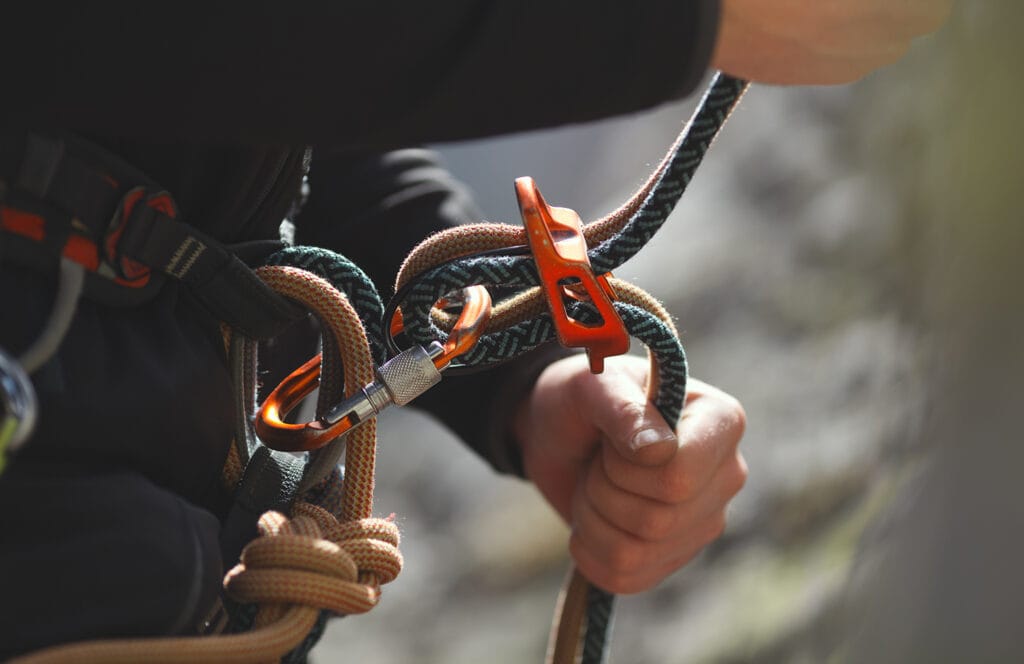
There is a myriad of belay devices to choose from. We understand that deciphering the differences between one device and other belay devices can be tricky.
Below we will talk about five belay device categories and provide examples for each category to help you decide.
The Different Types of Belay Devices
Comparison Table
| Belay Device | Type | Best Offer |
|---|---|---|
Kong Gigi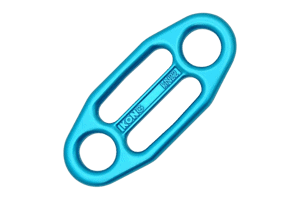 | Plate-style | |
Kong Oka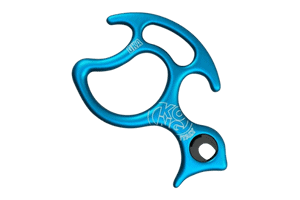 | Figure-8 | Check prices |
Black Diamond ATC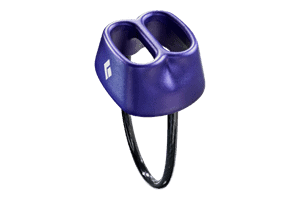 | Tube-style | Check prices |
Black Diamond ATC Guide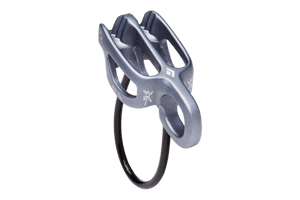 | Tube-style | Check prices |
Black Diamond ATC-XP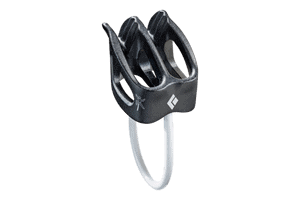 | Tube-style | Check prices |
Mammut Smart 2.0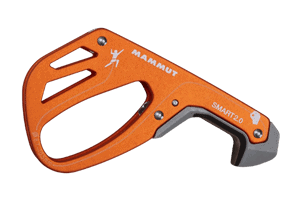 | Assisted braking tube | Check prices |
Black Diamond Pilot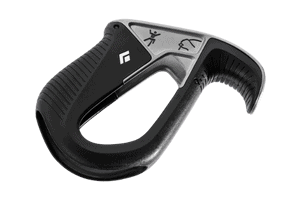 | Assisted braking tube | Check prices |
Petzl Grigri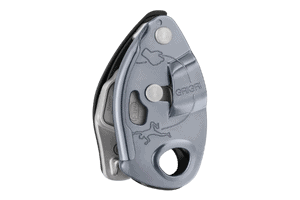 | Mechanical-assisted braking | Check prices |
Trango Vergo | Mechanical-assisted braking | Check prices |
1. Plate-style belay devices (e.g., Kong Gigi)

After the forefathers of climbing stopped hip belaying, they moved on to belaying with plate-style belay devices. Nowadays, most climbers prefer assisted braking and tube-style devices, but plates are still popular amongst guides.
The Kong Gigi is a plate-style workhorse belay device. It is constructed with hot-forged aluminum and can be used with single, double, and twin ropes. The main applications for the Gigi are auto-blocking, belaying from above, and rappelling.
Pros
Cons
2. Figure-8 belay devices (e.g., Kong Oka)
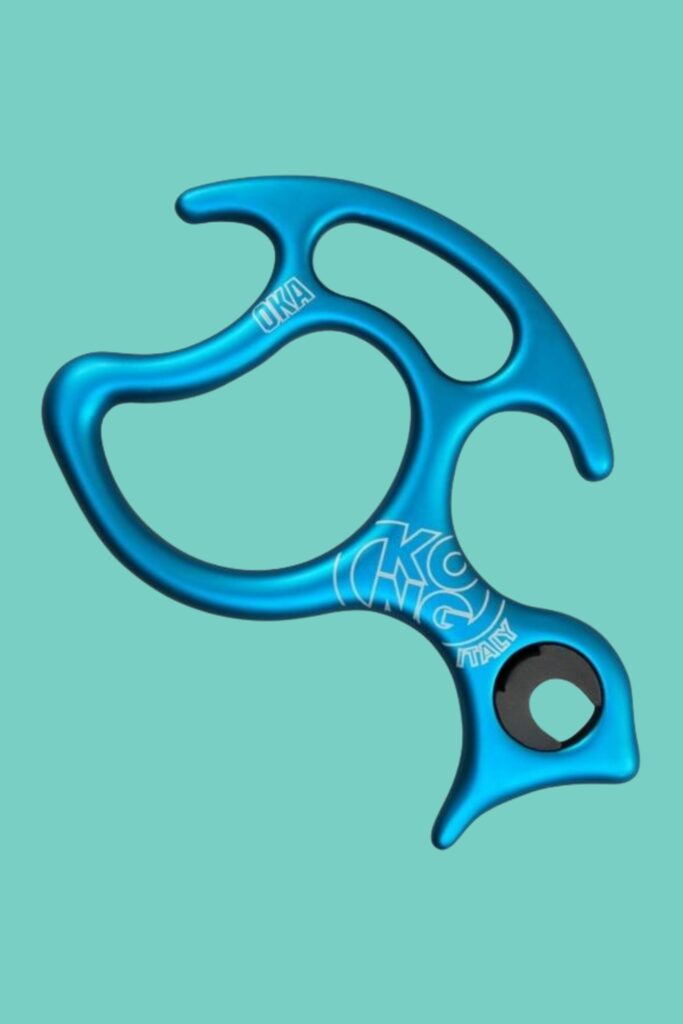
Figure-8 belay devices are simple pieces of equipment used for belaying or rappelling. Figure-8 belay devices still hold a place in canyoneering and rappeling. However, they have primarily been replaced by other belay devices.
We want to share one example of a figure-8 device because we think it’s important to track the evolution of belay device technology.
The Kong Oka is a purpose-built descender. It shines in canyoneering and is also very useful in emergency rescue and recovery situations.
Pros
Cons
3. Tube-style devices
Black Diamond ATC

Tube-style devices have continued to improve on the earlier versions from the 1990s. The general design is the same. However, modern features have improved this tried and true belay device.
The Black Diamond ATC is a standard tube-style device. The ATC’s lightweight and minimalist design relies on two slots for belaying or rappelling with two ropes. It’s available in many colors and can accommodate a rope diameter between 7.7 and 11mm (0.3 and 0.4 in).
Pros
Cons
Black Diamond ATC Guide
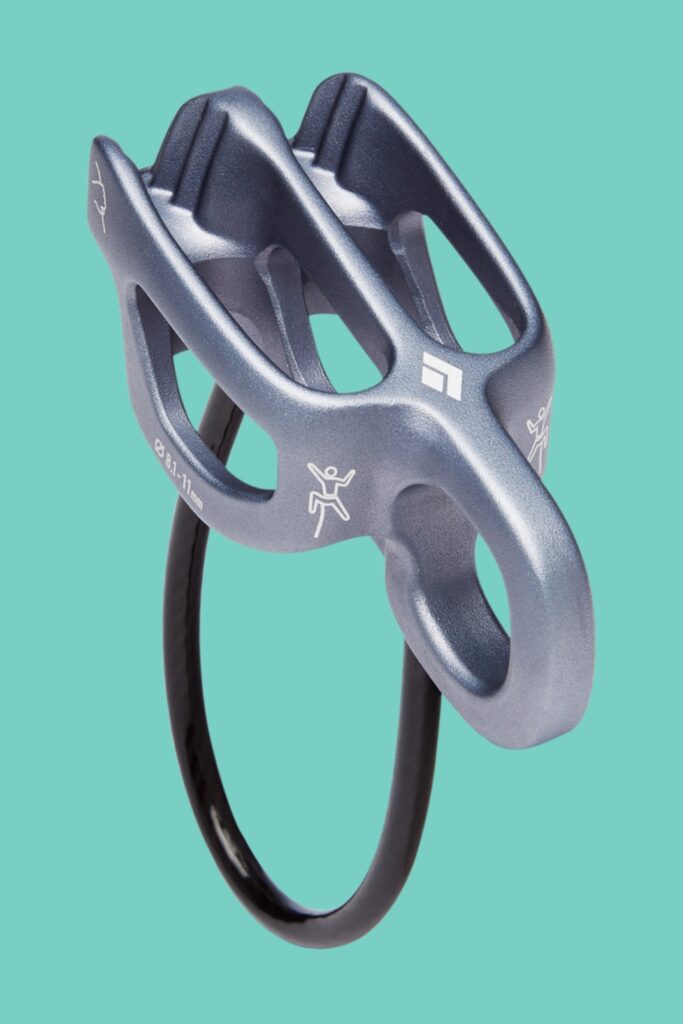
The Black Diamond ATC Guide is essentially a standard tube-style device with some additional features, notably the ability to belay in guide mode.
Pros
Cons
Black Diamond ATC-XP
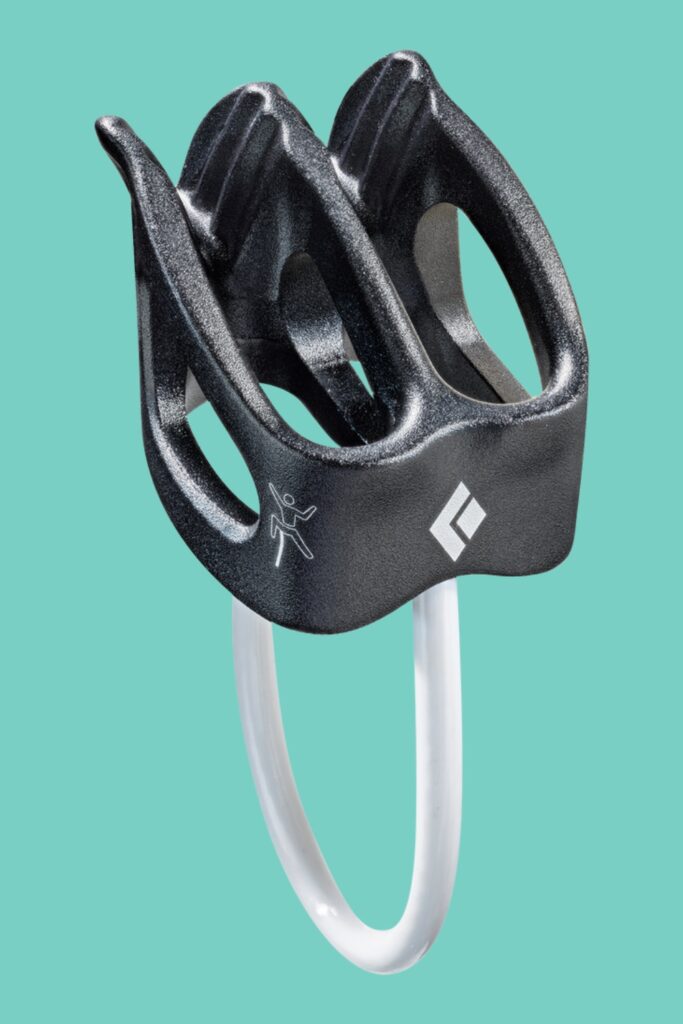
The Black Diamond ATC-XP is similar to the original design, except 30% lighter. Plus, it features multiple friction modes for better hold and stopping power. In addition, the ATC-XP can accommodate ropes between 7.7 and 11mm (0.3 and 0.4 in).
Pros
Cons
4. Assisted braking tube devices
Relatively new to the scene are assisted-braking tube devices, also known as auto-blocking tube devices or passive assisted braking devices. These devices function like tubular belay devices but have the additional assisted braking mode. They are considered passive because they do not have a mechanical camming mechanism.
Mammut Smart 2.0
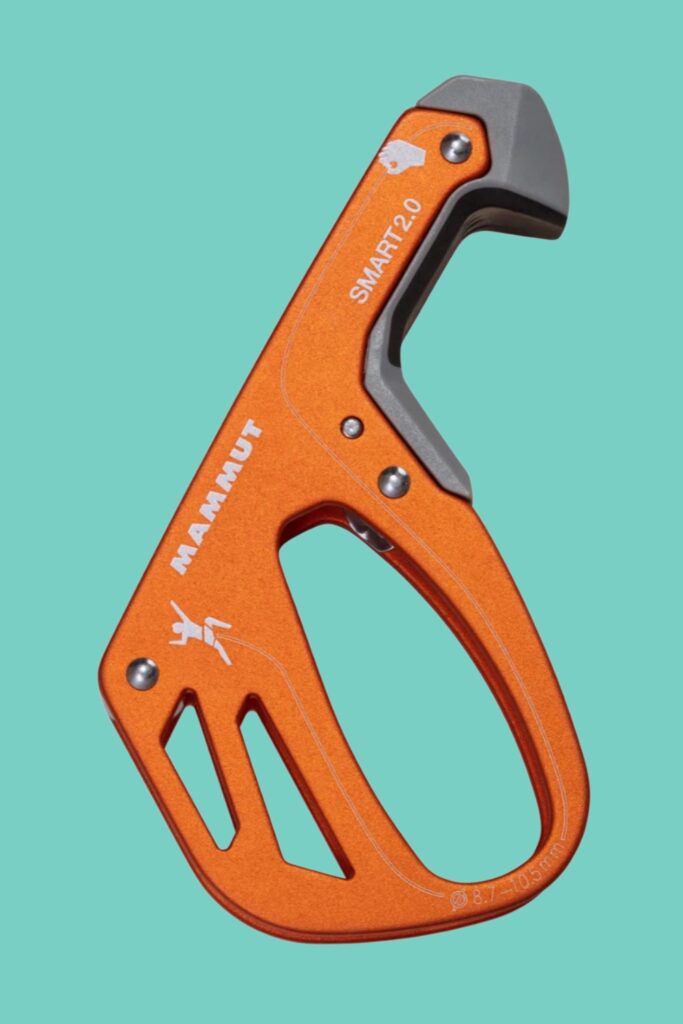
The Mammut Smart 2.0 is a modern rendition of the original Smart that was launched in 2009. It is a passive-assisted braking device that operates like other tubular belay devices but with a brake insert that blocks the rope in the event of a fall.
Pros
Cons
Black Diamond Pilot

The Black Diamond Pilot is an assisted braking belay device with an uncanny similarity to other Black Diamond tubular-style belay devices. It boasts a steel and hard-plastic construction that is lightweight and durable. It can accommodate ropes between 8.7 and 10.5mm (0.3 and 0.4 in).
Pros
Cons
5. Mechanical-assisted braking devices
The last category of devices we want to talk about is mechanical-assisted braking devices or active-assisted braking devices. Active assisted braking belay devices use a mechanical camming mechanism that pinches the rope to grab onto it when the rope is pulled taut.
Petzl Grigri
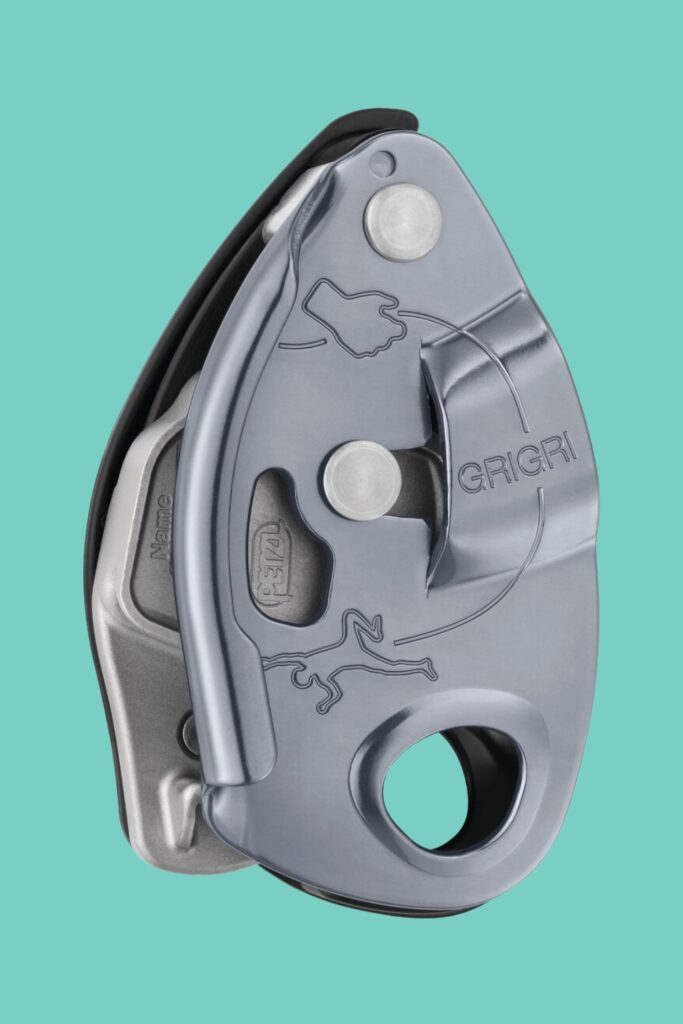
The Petzl Grigri is one of the market’s most popular active-assisted braking devices. In many ways, the Grigri is the standard for assisted braking belay devices.
Pros
Cons
Trango Vergo

The Trango Vergo is another mechanical-assisted braking device like the Grigri. However, unlike the Grigri, with the Vergo’s innovative design (and proper belay technique), the belayer never needs to override the device to pay out slack. Due to the ergonomic geometry of the Vergo, this versatile device is quickly climbing the leaderboards amongst other active assisted braking devices.
Pros
Cons
Tips for Buying a Belay Device
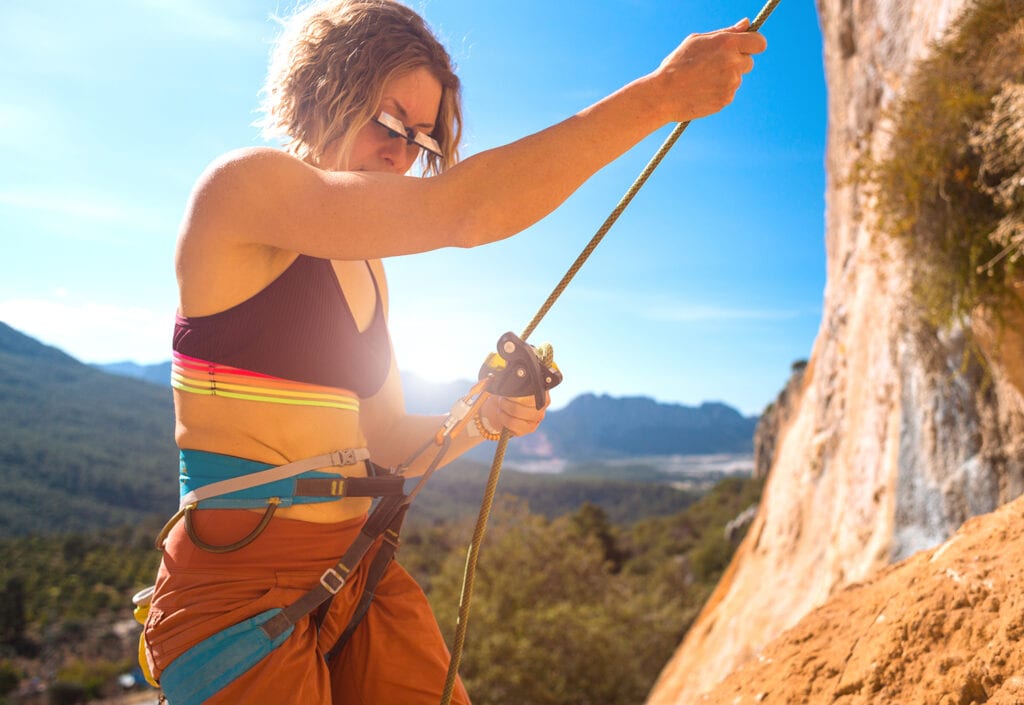
- Do your research: there is a lot you can learn online from climbing gear-related articles and videos.
- Buy in person: purchasing a belay device in person ensures you can touch and feel the gear. Plus, you can get real-time feedback from the local gear expert in the store.
- Support your local gear shop: It’s easy to purchase online, but it’s best to support local gear shops when possible.
- Try out your friends’ devices: you can learn a lot from the “try before you buy” strategy. Just make sure you’re safe and that someone who has mastered the device can double-check your application.
- Take a class or hire a guide: you can learn a lot about belaying devices in a structured class-like learning environment. For example, many gyms offer introductory classes that teach you how to belay with specific devices. Hiring a guide is also a great way to learn about the more technical aspects of belaying devices.
Final Thoughts
Finding the perfect belay device can take time and effort. There are myriad nuances and features – some of which are important to consider and others not so much.
When purchasing a belay device, we recommend a two-pronged approach. First, buy one assisted-braking device for climbing indoors or cragging outdoors. Then, buy a second device that accommodates two strands of rope for rappelling.
As time goes on, you will fine-tune your belay device repertoire. You will try new devices and phase out others on your journey to perfecting your climbing kit.
Be safe out there– check your knots and never let go with your braking hand.
Frequently Asked Questions
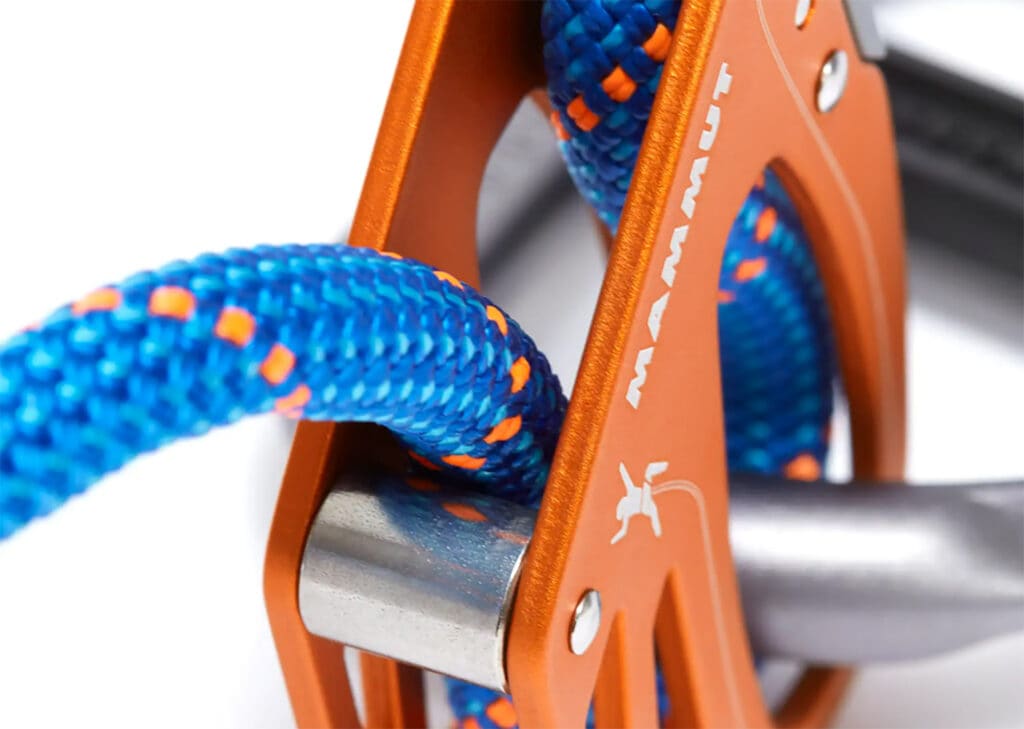
A belay device is only safe when it is used properly. In other words, any belay device can be considered safe if the safety guidelines of the device are followed. However, assisted braking devices tend to be considered the safest because of their extra layer of security.
It is possible to self-belay with a Grigri. However, it is not considered the safest or best belay device for the task. For more guidance on self-belaying and rope soloing (1), we recommend doing more research.
In this article, we talked about five common categories for belay devices.
– Plate-style belay devices: ideal for belaying two followers from above
– Figure-8 belay devices: ideal for descending
– Tube-style devices: ideal for beginners and highly versatile
– Assisted braking tube-style devices: ideal for beginners who want extra security for top rope or lead belaying
– Mechanical-assisted braking devices: ideal for extra security while lead climbing and belaying
Technically, any of the devices discussed in this article can be used for indoor climbing. However, the best indoor gym climbing device is approved by your local gym. Generally speaking, gyms prefer any of the many assisted braking devices. Therefore, they may not allow devices without an assisted-braking feature.
The best belay device for multi-pitch climbing is an auto-blocking belay device when the device is set up in guide mode, such as the Black Diamond ATC Guide or the Petzl Grigri. However, if you want the versatility of belaying one or two followers, stick with a tube device with guide mode.
Considering your budget when investing in a belay device is essential. If you need a device that won’t break the bank, consider a standard tube-style device not equipped for belaying in guide mode, such as the Camp Shell (2).
Assisted braking devices are beginner friendly because they add extra security while the beginner belayer refines their technique. However, some assisted braking devices, most notably mechanical-assisted braking devices, can have a steep learning curve for beginners.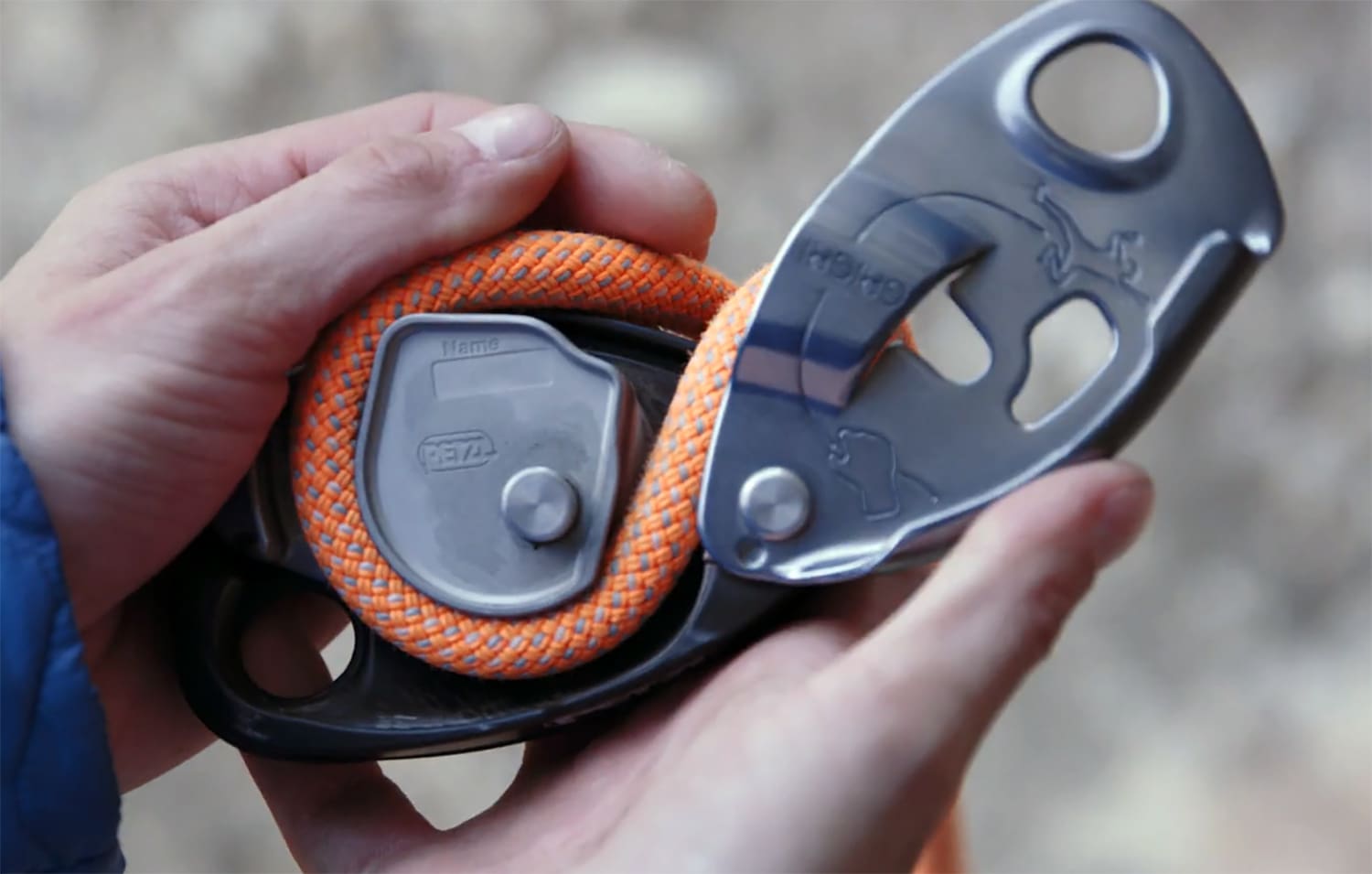
Wanting a belay device that will last you a long time makes perfect sense. The longer you can use the device, the less money you have to spend in the long run.
For a belay device that lasts a long time and is low maintenance, we recommend any of the assisted braking tubular-style devices listed above.
References
General principles for solo climbing with a fixed belay rope
Petzl (retrieved on 12/20/2022)
https://www.petzl.com/US/en/Sport/General-principles-for-solo-climbing-with-a-fixed-belay-rope
Camp Shell (retrieved on 12/20/2022)
https://www.backcountry.com/camp-usa-shell-belay-device

